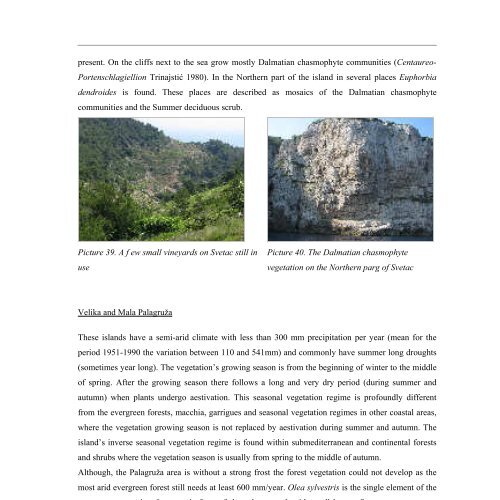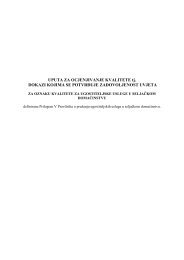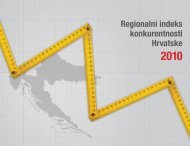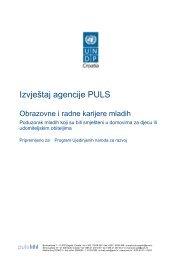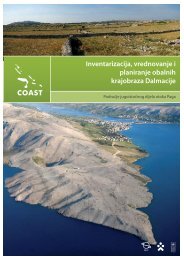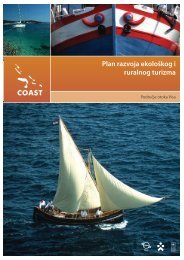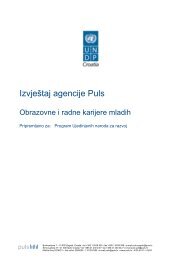PriruÄnik o kartama staniÅ¡ta Dalmacije - UNDP Croatia
PriruÄnik o kartama staniÅ¡ta Dalmacije - UNDP Croatia
PriruÄnik o kartama staniÅ¡ta Dalmacije - UNDP Croatia
- No tags were found...
You also want an ePaper? Increase the reach of your titles
YUMPU automatically turns print PDFs into web optimized ePapers that Google loves.
present. On the cliffs next to the sea grow mostly Dalmatian chasmophyte communities (Centaureo-Portenschlagiellion Trinajsti 1980). In the Northern part of the island in several places Euphorbiadendroides is found. These places are described as mosaics of the Dalmatian chasmophytecommunities and the Summer deciduous scrub.Picture 39. A f ew small vineyards on Svetac still inusePicture 40. The Dalmatian chasmophytevegetation on the Northern parg of SvetacVelika and Mala PalagružaThese islands have a semi-arid climate with less than 300 mm precipitation per year (mean for theperiod 1951-1990 the variation between 110 and 541mm) and commonly have summer long droughts(sometimes year long). The vegetation’s growing season is from the beginning of winter to the middleof spring. After the growing season there follows a long and very dry period (during summer andautumn) when plants undergo aestivation. This seasonal vegetation regime is profoundly differentfrom the evergreen forests, macchia, garrigues and seasonal vegetation regimes in other coastal areas,where the vegetation growing season is not replaced by aestivation during summer and autumn. Theisland’s inverse seasonal vegetation regime is found within submediterranean and continental forestsand shrubs where the vegetation season is usually from spring to the middle of autumn.Although, the Palagruža area is without a strong frost the forest vegetation could not develop as themost arid evergreen forest still needs at least 600 mm/year. Olea sylvestris is the single element of theevergreen vegetation. It grows in form of short thorn scrub with small leaves. Some evergreen trees(Ficus carica and Laurus nobilis) have an anthropogenic origin. Therefore, Palagruža archipelago is asummer-deciduous zone. This bioclimatic zone is very rare in <strong>Croatia</strong> and restricted to a few SouthernAdriatic islands. Consequently, Palagruža is extremely important for the conservation of biodiversity.112


